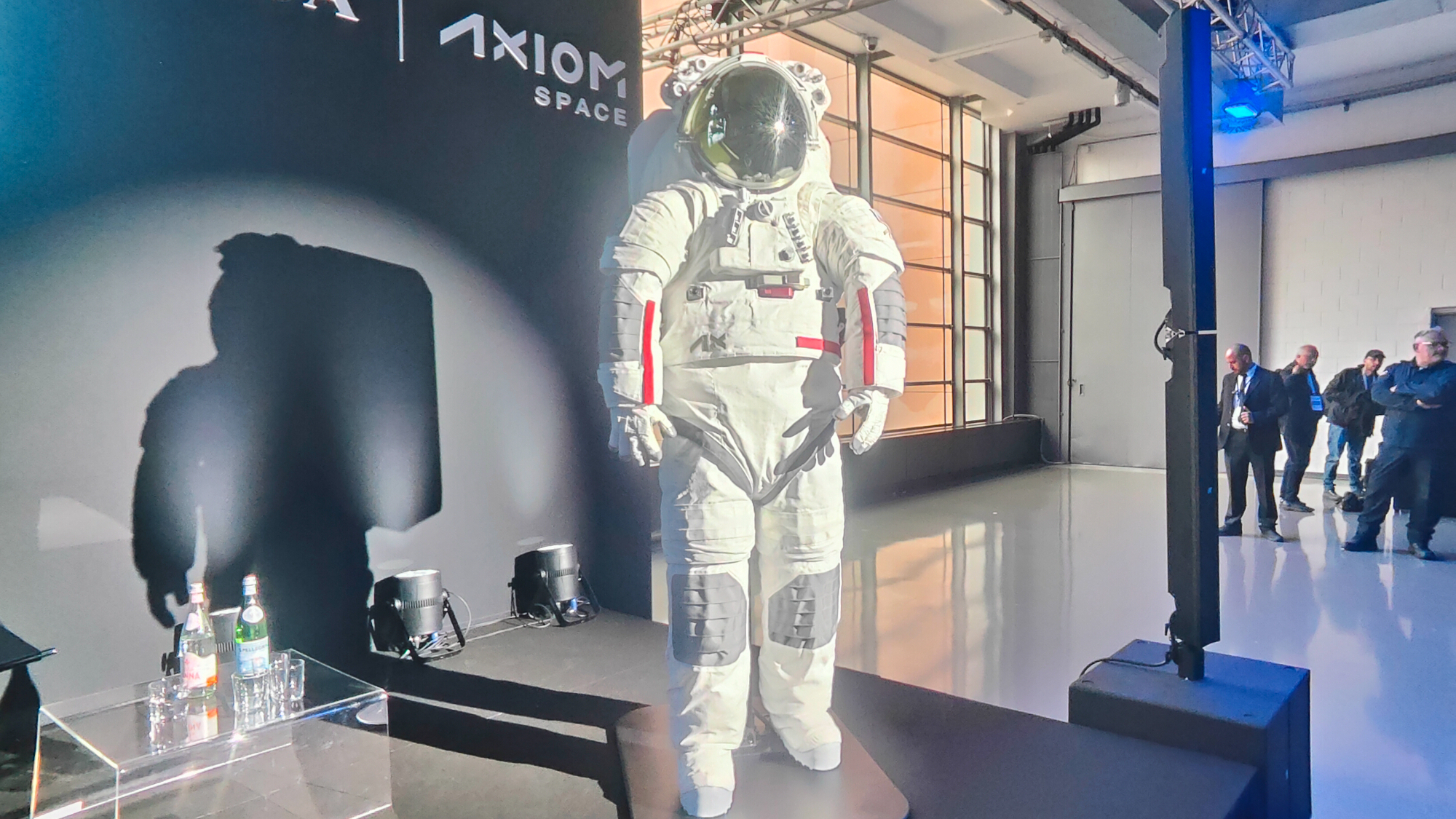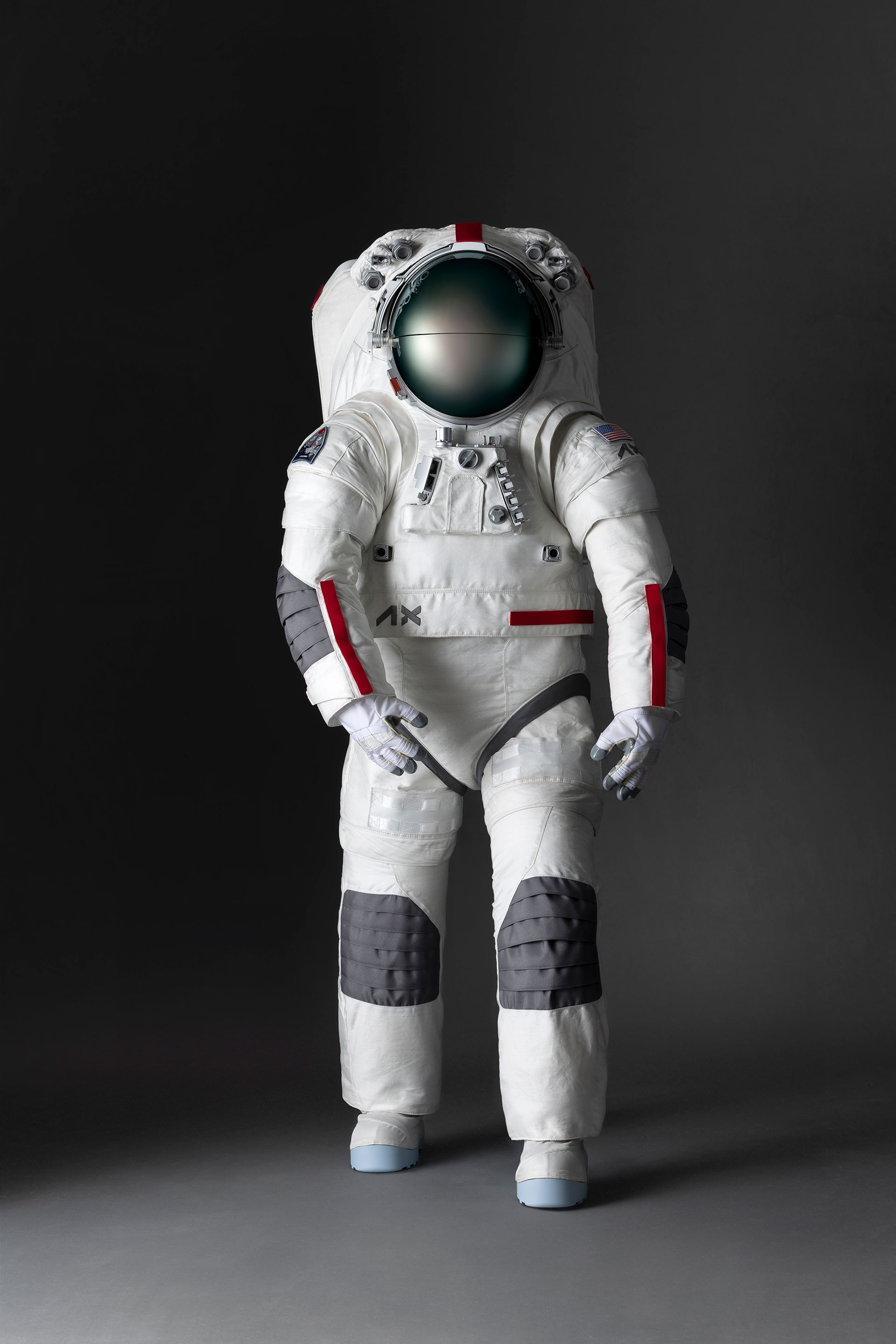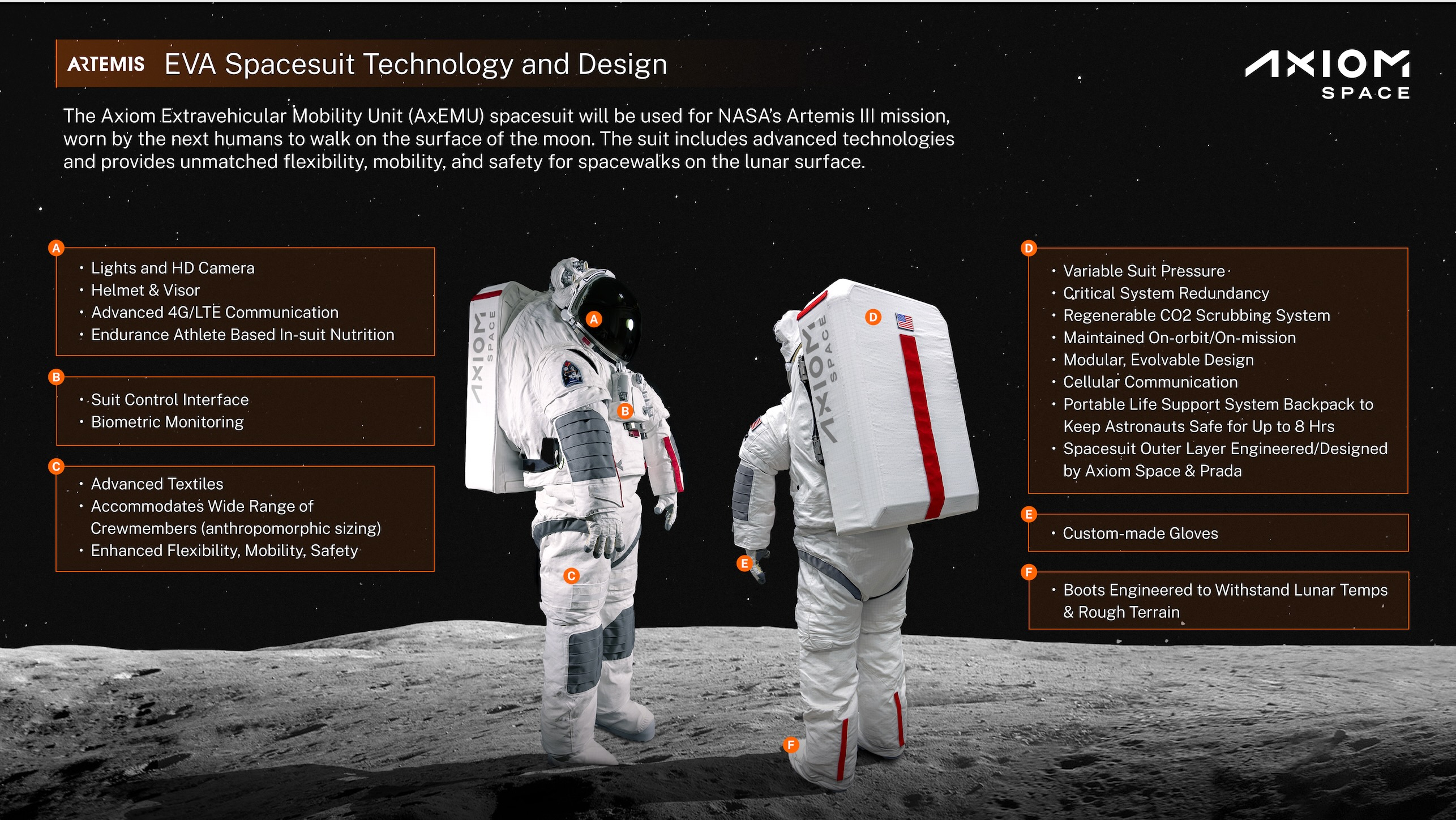A 21st-century moon suit: Axiom Space's lunar spacesuit sports 4G comms, Prada looks and Oakley visors for Artemis astronauts
The AxEMU is designed to allow Artemis 3 astronauts to explore the south pole of the moon.

MILAN — If you're going to team up with Prada for a 21st-century moon suit, it only makes sense to unveil it in one of the fashion capitals of the world.
Axiom Space and Prada revealed the Axiom Extravehicular Mobility Unit (AxEMU) spacesuit in a press conference held at the International Astronautical Congress (IAC) here today (Oct. 16).
AxEMU will be used for NASA's Artemis 3 mission, which is currently scheduled to launch in late 2026. It has been specially designed for the lunar south pole, which will be a colder environment than astronauts experienced on the Apollo missions, which landed around the moon's equator.

The new spacesuit incorporates multiple redundant systems and an onboard diagnostic system to ensure safety for crewmembers, according to Axiom. It features lights and an HD camera on the helmet, 4G/LTE communication, a suit control interface, biometric monitoring, regenerable carbon dioxide scrubbing and portable life support to keep astronauts safe for up to eight hours. It can also accommodate a wide range of crewmembers, male or female.
Related: Artemis moon suit designed by Axiom Space and Prada revealed in Milan (photos)
Matt Ondler, Axiom Space president, described the unveiling as an historic day. "So two years from now, when NASA applies the Artemis 3 mission, the astronauts will be wearing the suit design," Ondler said. "More profoundly for us, the first woman to walk on the moon will wear this suit, the first person of color [on the moon] will be wearing this suit, and the first non-American will be wearing this suit."
The suit needs to be ready for 2026, but further testing, including in vacuum chambers and reduced-gravity environments, is needed to meet the deadline. Teams have also been working on integration of the spacesuit with SpaceX's new Starship vehicle — which will be NASA's human landing system for the mission — and address any remaining interface challenges.
The partnership with Prada was highlighted as a cross-industry collaboration success. "I'm very proud of the result we're showing today, which is just the first step in a long-term collaboration with Axiom Space," said Lorenzo Bertelli, Prada chief marketing officer, in a statement. "We've shared our expertise on high-performance materials, features, and sewing techniques, and we learned a lot."
Get the Space.com Newsletter
Breaking space news, the latest updates on rocket launches, skywatching events and more!
Russell Ralston, Axiom's executive vice president of extravehicular activity, speaking at the unveiling, said the partnership was groundbreaking.
"This collaboration exemplifies the power to create better technology solutions together by merging Axiom Space's elite engineering experience with Prada's all-round craftsmanship. We've blended engineering, science and art to produce the ultimate garments, ensuring that astronauts can perform their tasks and missions in safety and comfort."

Building a new suit for the extreme conditions on the moon has not exactly been a walk in the park, however.
Ralston, in response to a question, also highlighted many challenges, including the suit's boots. "How you insulate the foot from the surface is a tough challenge," Ralston said, noting the extreme temperatures and temperature changes, but also the need to ensure comfort and safety.
The suit has a mostly white external layer in order to reflect the sun and keep wearers cool despite extremely high temperatures. Many components also went through extensive testing to ensure the suit can withstand strong radiation environments.
AxEMU will not have a heads-up display but instead will come with a handheld device. This will offer an "enhanced confirmation display, imagery and navigation data," Ralston said.
The suit also has features and materials designed to combat the accumulation of fine and damaging lunar dust on the suit's exterior. This includes proprietary coatings and cleaning tools.
In contrast to Apollo suits, AxEMU is specifically geared to the lunar south pole. This means taking into account factors such as the sun often being low in the sky and affecting visibility. For this, Axiom looked elsewhere for solutions.
"We've partnered with others like Oakley for optimal system design to enhance astronaut visibility," Ondler said.
Related: The evolution of the spacesuit in pictures
AxEMU will not just be heading to the moon. The suit will also be used for Axiom's planned space station activities. "We also think there are commercial opportunities to work with commercial and private astronauts," Ondler said.
The architecture is evolvable, scalable and adaptable for missions on the lunar surface and in low Earth orbit, an Axiom statement noted.
Minor tweaks may still be made to AxEMU as the suit enters more strenuous testing. However, the team is committed to pushing forward with the schedule and ensuring the spacesuit is ready for its intended missions, according to Ondler.
It is not just Axiom's new lunar spacesuit that has recently emerged. China late last month unveiled the exterior design of its new extravehicular spacesuit that will allow its astronauts to walk on the moon. The country aims to launch its first crewed lunar mission before 2030.
Join our Space Forums to keep talking space on the latest missions, night sky and more! And if you have a news tip, correction or comment, let us know at: community@space.com.

Andrew is a freelance space journalist with a focus on reporting on China's rapidly growing space sector. He began writing for Space.com in 2019 and writes for SpaceNews, IEEE Spectrum, National Geographic, Sky & Telescope, New Scientist and others. Andrew first caught the space bug when, as a youngster, he saw Voyager images of other worlds in our solar system for the first time. Away from space, Andrew enjoys trail running in the forests of Finland. You can follow him on Twitter @AJ_FI.









